High-Pressure Torsion of Pure Metals: Influence of Atomic Bond Parameters and Stacking Fault Energy on Grain Size and Correlation with Hardness
The grain size in pure elements (magnesium, aluminum, silicon, titanium, vanadium, chromium, iron, nickel, copper, zinc, germanium, zirconium, niobium, molybdenum, palladium, silver, indium, tin, hafnium, tantalum, gold and lead) after processing by highpressure torsion (HPT) reaches steady-state levels where the grain size remains unchanged with straining. The steady-state grain sizes decrease by atomic bond energy as shown in Fig.1 and related parameters such as specific heat capacity (Fig.2), activation energy for self-diffusion (Fig.3) and homologous temperature (Fig.4) and are reasonably independent of stacking fault energy (Fig.5). A good correlation exists between the hardness normalized by the shear modulus and grain size normalized by the Burgers vector as in Fig.6, indicating that the important factor for strengthening HPT-processed pure metals is the average size of grains having high angles of misorientation.
[Published in Acta Materialia, 59 (2011) pp 6831-6836.]
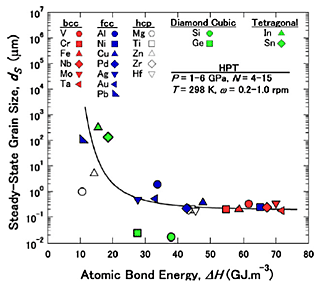 |
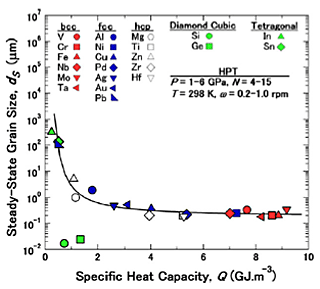 |
Fig. 1 Plots of dS against |
Fig. 2 Plots of dS against Q. |
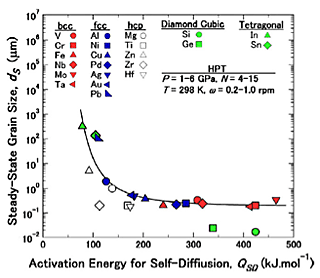 |
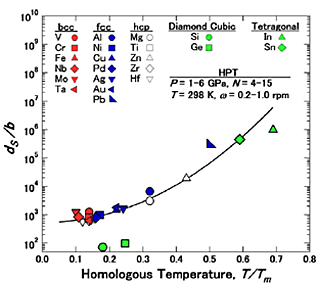 |
Fig. 3 Plots of dS against |
Fig. 4 Plots of dS against T/Tm |
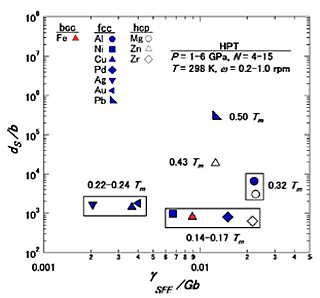 |
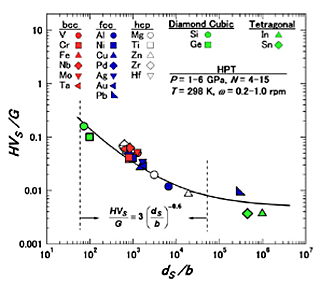 |
Fig. 5 Plots of dS against |
Fig. 6 Plots of HVS/G against dS/b |